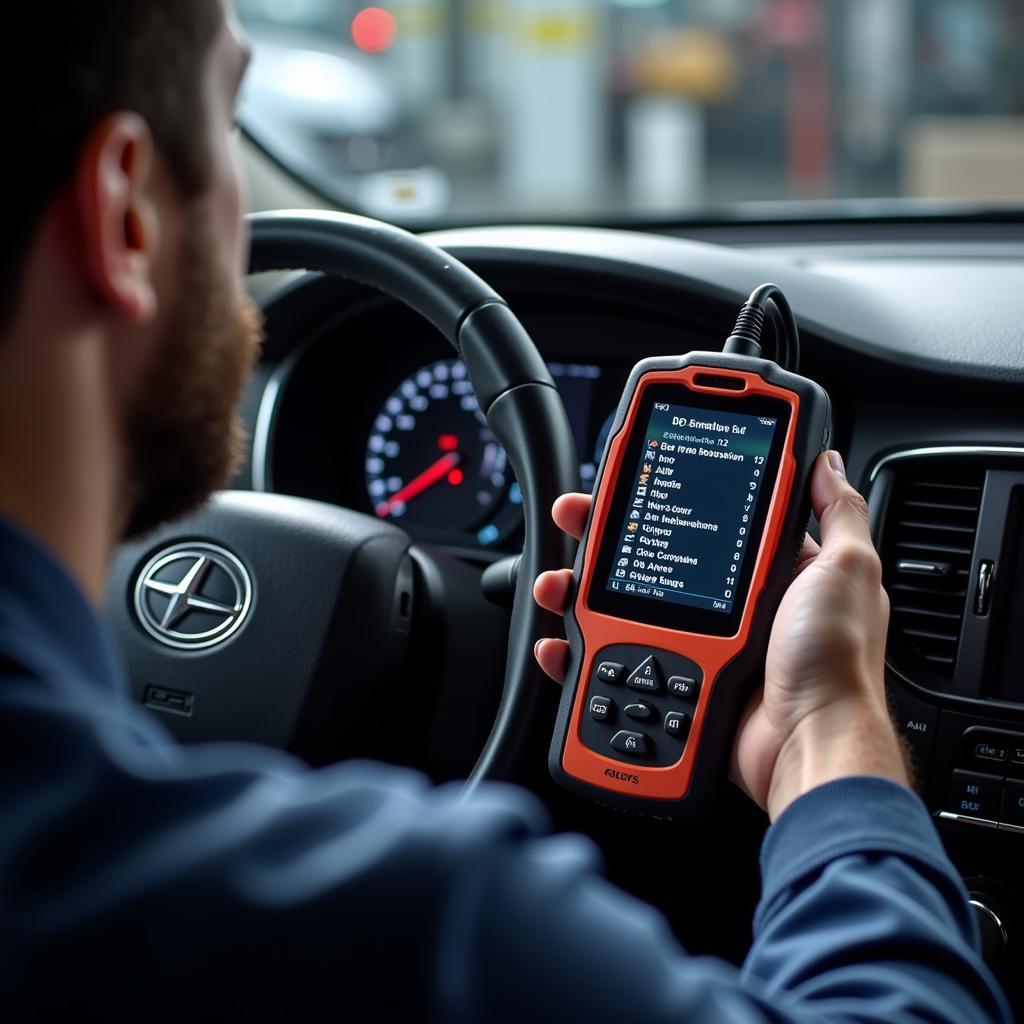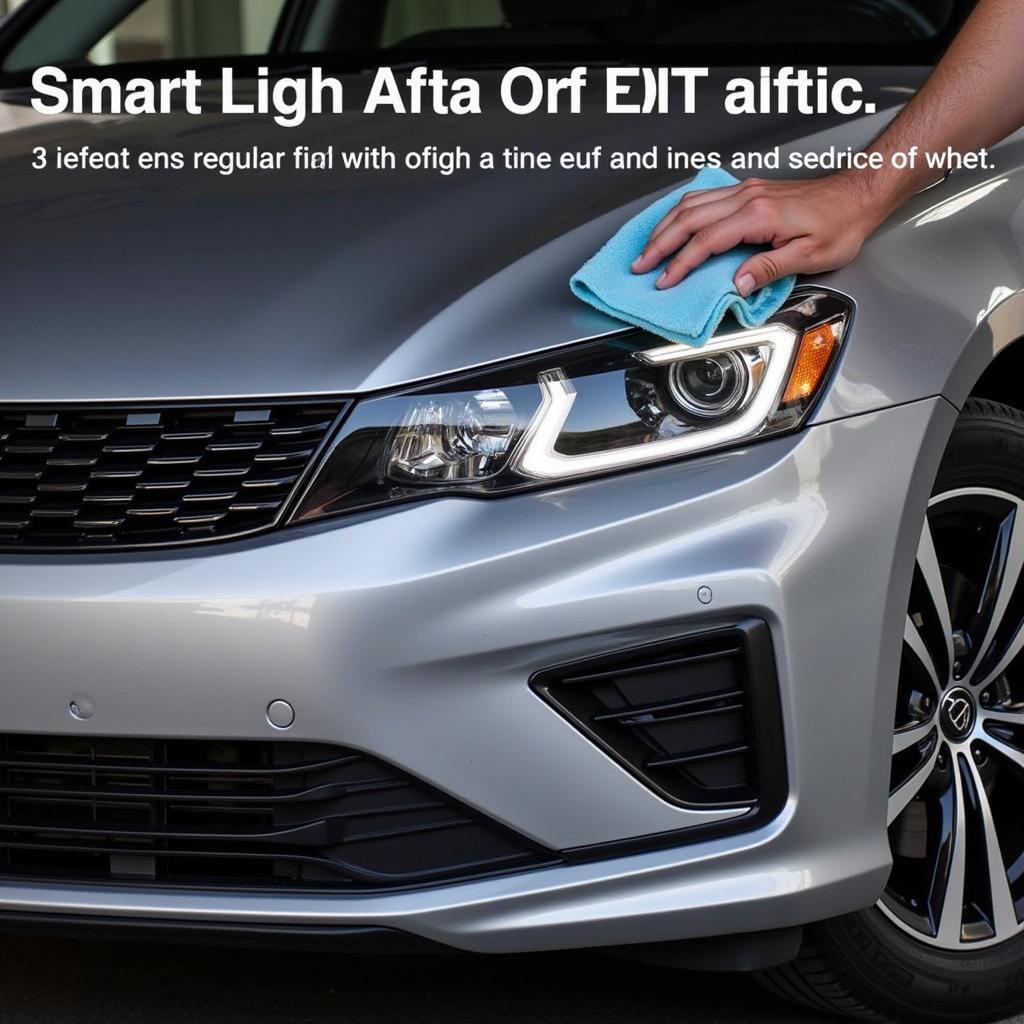Smart car lights, with their advanced features like adaptive headlights and automatic high beams, offer enhanced safety and convenience. However, like any technology, they can experience issues. This article provides a comprehensive guide to troubleshooting and resolving common Smart Car Lights Problems.
Understanding the intricacies of smart car light systems can be daunting. From faulty sensors to software glitches, the potential causes are diverse. This article aims to demystify these complexities, offering practical advice and solutions for car owners, mechanics, and technicians alike. We’ll delve into the common issues, diagnostic procedures, and repair options for various smart car light problems.
Common Smart Car Lights Issues
Adaptive headlights, a key feature in many modern vehicles, can malfunction due to issues with the steering angle sensor or the adaptive headlight control module. Symptoms may include headlights not adjusting properly when turning or staying fixed in one position.
Automatic high beams, designed for enhanced visibility, can sometimes fail to switch between high and low beams appropriately. This can be caused by a faulty ambient light sensor or problems with the system’s software.
Another common issue is flickering or dimming lights. This can be attributed to loose connections, a failing ballast, or problems with the car’s electrical system. Similar to car fuse box problems, electrical issues can manifest in various ways, impacting the performance of smart car lights.
 Smart Car Light Malfunction: Adaptive Headlight Not Adjusting
Smart Car Light Malfunction: Adaptive Headlight Not Adjusting
Diagnosing Smart Car Light Problems
Diagnosing smart car light problems requires a systematic approach. Begin by visually inspecting the lights and surrounding components for any obvious damage or loose connections. Next, use a diagnostic scanner to check for fault codes related to the smart light system. This is particularly helpful in identifying sensor or module issues. Remember that, just like with commonly overlooked problems with used cars, seemingly minor issues with smart car lights can indicate more significant underlying problems.
If the diagnostic scanner reveals no codes, further investigation may be necessary. This could involve testing individual components like sensors and modules using specialized equipment. For example, the steering angle sensor can be tested using a multimeter to verify its output.
 Diagnostic Scanner Checking Smart Car Light Fault Codes
Diagnostic Scanner Checking Smart Car Light Fault Codes
Repairing Smart Car Light Problems
Repair options vary depending on the specific issue. Simple problems like loose connections or burned-out bulbs can be easily fixed by replacing the faulty components. However, more complex issues, like a malfunctioning adaptive headlight control module, may require professional repair or replacement. While some repairs can be done by experienced DIYers, others require specialized knowledge and tools. Don’t underestimate the complexity of these systems, much like the potential issues found in multiple owner used cars problems.
If you’re unsure about performing the repair yourself, it’s always best to consult a qualified mechanic or technician. They have the expertise and equipment necessary to diagnose and fix complex smart car light problems effectively.
 Mechanic Repairing Smart Car Light Module
Mechanic Repairing Smart Car Light Module
Preventing Smart Car Light Problems
Regular maintenance can help prevent many smart car light issues. This includes keeping the lights clean and free of debris, checking for loose connections, and ensuring the car’s electrical system is in good working order. Just as you would look out for no problem cars 2, proactive maintenance is crucial for preventing future issues.
Furthermore, be mindful of environmental factors that can affect smart car lights. For instance, extreme temperatures or exposure to harsh chemicals can damage sensors and other components. By addressing these factors and adhering to a regular maintenance schedule, you can prolong the lifespan of your smart car lights and ensure optimal performance. Understanding car problem symbols and names is also vital for preventative maintenance.
 Cleaning Smart Car Light Lens
Cleaning Smart Car Light Lens
Conclusion
Smart car lights offer significant advantages in terms of safety and convenience. However, like any technology, they can encounter issues. By understanding the common problems, diagnostic procedures, and repair options, you can effectively address smart car lights problems and keep your vehicle’s lighting system in top condition. For any assistance or inquiries, feel free to connect with us at AutoTipPro. Our phone number is +1 (641) 206-8880, and our office is located at 500 N St Mary’s St, San Antonio, TX 78205, United States.
FAQs
- What are the most common causes of smart car light problems? Faulty sensors, software glitches, and electrical issues are among the most common causes.
- How can I diagnose smart car light problems? Start with a visual inspection, then use a diagnostic scanner to check for fault codes.
- Can I repair smart car light problems myself? Simple repairs can be DIY projects, but complex issues often require professional help.
- How can I prevent smart car light problems? Regular maintenance, including cleaning and checking connections, is crucial for prevention.
- What should I do if my adaptive headlights aren’t working correctly? Consult a qualified mechanic for diagnosis and repair.
- Why are my automatic high beams not switching properly? A faulty ambient light sensor or software issues could be the culprit.
- What if my smart car lights are flickering or dimming? Check for loose connections, a failing ballast, or broader electrical system issues.





Leave a Reply